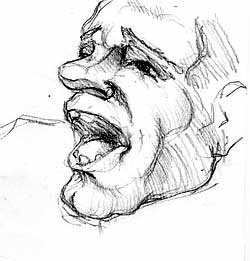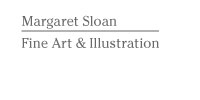
Paul Foxton at Learning-to-see, the artist behind one of my favorite blogs, has just posted that he’s had to get a day job. He’s wondering how he’s going to have enough time to paint.
I’m something of an expert at this. For three years I’ve been managing a more than full-time job, plus learning to paint. It’s tough, and slow, and frustrating. Although I truly like going to work most days (I’m lucky that I get to do creative stuff, and keep bees at my job), I often daydream about painting all day long.
But unless I suddenly win big at the lottery (hmm, I guess I should really buy a ticket one of these days) in order learn to to paint—or do any other kind of intense study and work, whether it’s writing, music, computer programming, boat building—I’ve had to make certain decisions, embrace certain strategies. Sorry if this list is a little preachy.

1. Realize that progress is going to be slow. If you have to work a day job to live, you just have to embrace that you’re going to move forward in small steps.
2. Keep your work close at hand. I keep a sketch pad available at all times-I draw everything, everyone, until family and friends tell me to stop. Thankfully, they’re pretty patient. I even draw in the car at stop lights. (But don’t draw in meetings at work. Bosses don’t like it.)
2. Be your own (strict) boss. I set a goal of dedicating 2o hours a week to painting, and I keep a time sheet. I list amount of time and project—and it doesn’t have to be directly handling paint. Research counts, blogging counts, sketching counts. But the time sheet keeps me honest. Keeps me from wasting time, and keeps me on a schedule. Because I can get seriously lost in “research,” and not leave enough time for painting.
3. Kill your T.V. I still have one, but it won’t make the switch happily to digital because it’s too old. Now I need to seriously disable the internet and YouTube. On the rare occasion I do watch a movie (mostly at home), I usually sketch the actors, the set design, costumes. (John Ford movies are great for learning landscape composition.)
4. Get some rest. I remind myself I’m human and need rest or all else goes to heck. During the crunch time at work, I have to lay off painting, or I’m no good for anything. During those weeks, I only work at painting 10 hours a week!
5. Be jealous of your time. What would I rather do—paint or dust the books on the bookshelf? No brainer, that. My grandmother would gasp at the amount of dust and clutter in my house.
6. Make hard choices. I’ve had to give up many of the extra-curricular activities I used to engage in. The hardest one, that’s hurt the most, has been not seeing my family as often as I’d like. My brother’s young ‘uns have grown up while I’ve been working so hard, and I’ve missed them tremendously (I’m actually not sure I should have made that sacrifice). The second hardest sacrifice has been cutting back on music, until I scarcely play anymore.
7. Accept that for most of us, anything you really want is going to be hard to achieve. Art is hard. An evening spent painting is not a way to relax; it’s work. It’s work that I have to do or face becoming twitchy, bitchy, and mighty unhappy.


